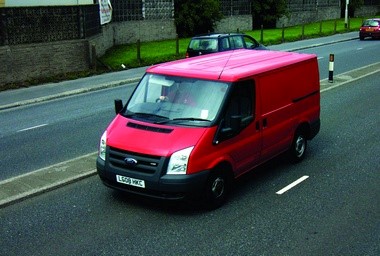Lets work together



Suite 3A, Chapel Allerton House, 114 Harrogate Road, Leeds, LS7 4NY
ukinfo@integrated-skills.com
+44 (0) 3300 888 670

![]() The various route planning software packages available in the UK can be broadly classified as either passive or active. Passive devices can store data such as speed, GPS location and direction. However, unlike active devices they do not possess the facility to transmit data in real time, to transmit information a passive device must be removed and the data downloaded to the network via computer terminal. For courier route planning software, the tracking device will normally have active and passive capabilities. Both types of devices effectively fulfil the same function, but the active component will only come into play if the infrastructure exists to transmit live data.
The various route planning software packages available in the UK can be broadly classified as either passive or active. Passive devices can store data such as speed, GPS location and direction. However, unlike active devices they do not possess the facility to transmit data in real time, to transmit information a passive device must be removed and the data downloaded to the network via computer terminal. For courier route planning software, the tracking device will normally have active and passive capabilities. Both types of devices effectively fulfil the same function, but the active component will only come into play if the infrastructure exists to transmit live data.
For example, if a Wi-Fi or satellite network is available, then the data can be transmitted to the server. If such connections do not exist the device will continue to passively store data. Vehicle routing software and its associated technology is continually evolving and as network coverage continues to expand courier route planning software is becoming increasingly active. Such technology allows the input of multiple entries and destinations and communications can be tracked, such that the courier can connect directly with operators from an increasing number of locations.
Uses of vehicle tracking software
Perhaps the most common use of route planning software is in commercial vehicle fleet management. As a corollary, distribution companies also track trailers and the cab (where the driver sits) itself separately. The reason is simple, different trailers (that carry the load) are designed for different loads. Although containers tend to be of the same size, (for a given cab) some are refrigerated; some are boxes, some are flat bed and some are curtain sided, so they all need to be connected to the delivery route planning software. The technology is also employed by agencies who are involved in public transportation.
For example, buses can be tracked to make sure that they are staying within timetable limits or that the correct driver is on a given bus at the right time. Such systems also enable customers to view transit information such as arrival or waiting times. A further use is in the sphere of law enforcement. In some cases the insurance industry will give discounts on vehicle premiums if adequate tracking technology is installed. The common feature of both active and passive route optimisation and planning software is the presence of a GPS tracking device.
The components of a GPS system
The GPS device itself is designed to relay information, normally at regular interval to a central operations centre or server. This information is not merely limited to its location but covers data ranging from fuel reserve to the number of accessible GPS satellites. There are two basic components:
In short, the logistics company must ensure that its route optimisation software is fit for purpose and include as much active GPS tracking as possible to ensure streamlined day to day operations.
Would you like to know more about Types and Uses of Vehicle Tracking Software? Fill in your details below and let us know how we can help.
Website Designed & Built by we are CODA